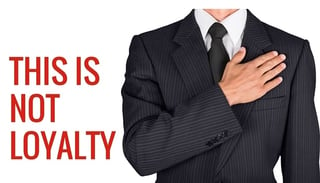We know that customers are more demanding and have higher expectations than ever. And since most corporations are working hard to better serve these smart customers, it’s no surprise that many are zeroing in on customer loyalty and retention programs as a way to create stronger relationships, and change customer behavior and habits in ways that benefit the brand.
But they usually don’t work that way. The thing is, loyalty programs have proliferated with such abandon that they rarely actually drive customer loyalty. When (according to Colloquy research) households, on average, each have 29 loyalty program memberships across multiple sectors, these programs become little more than a way for customers to get the occasional discount.
This is probably why most households use less than half of those cards, and that the number of loyalty programs being used continues to drop as a percentage of the programs a given household is part of. The reason is as simple as it is complex: customers don’t see the value in most programs.
What loyalty is, and isn’t.
Of course, the intention of most programs is to drive “real” loyalty - that is, the kind of loyalty that means greater share of wallet, lower costs to serve, greater retention and a tendency to share their passion for your brand with friends and family. This kind of customer loyalty is defined by both the emotional perspectives and behavioral tendencies that cause us to favor one brand over others.
This kind of real loyalty can be (and often is) driven by a better customer experience, as well as things like convenience, value or a feeling that the brand actually cares about them. This is the true value of getting a customer signed on to your loyalty program.
Unfortunately, rather than these kinds of loyalty, most of today’s programs do little more than encourage transactional behaviors, based on superficial relationships with their customers.
The thing is, unless companies use these programs and the data gather through them more intelligently, they’ll go from having superficial relationships like these to having no relationships at all. For these firms, “loyalty” will be a thing of the past.
Why loyalty programs don’t drive loyalty
As we all know, the rise of smart customers is undercutting traditional notions of loyalty: we download comparison apps to find the lowest price, which implies and enables constant switching and ever greater disloyalty. People price shop in-store to buy online, from someone else. They look for the biggest discounts no matter who they’re from.
And that, I’m sure you’ll agree, is not loyalty.
So where do most loyalty programs fall short? Sadly, almost everywhere. A few years ago, I wrote an article about my experience as a loyalty customer of Marriott. Aptly titled “When Loyalty Programs Annoy: Setting Expectations And Failing To Deliver,” in it I discuss why any company invests in customer experience – to drive loyalty-like behaviors.
But the reality is, most customer loyalty and retention programs – including Marriott’s – don’t do anything of the kind. Having asked countless customer across dozens of industries, we know what customers desire in a loyalty program. And no surprise, points have nothing to do with it. At the end of the day, it’s about the experience.
Treat me as if you actually care. (You do, don’t you?)
While most customers join for the discounts, they overwhelmingly say that what they really want is special treatment and offers not available to the general public. They want to feel – and be treated as if – they mean something to you. After all, by joining this “club” they’ve given you something of value; their data. And they know it.
Their expectation? Pretty straightforward – give them value in return. Use the data they’ve given you to make their lives easier, to give them personalized perks and provide them an experience that reinforces the special relationship the customer loyalty and retention program implies you have with them. After all, intelligently interacting with a customer is the best way to get more business from them.
Amazingly, the majority of companies don’t use customer or loyalty program data to provide better experiences, much less build stronger relationships with their customers. It’s all sell and no serve. Today, there is no excuse for any company not to use their loyalty programs to deeply connect with and better serve their most valuable customers.
Use customer data to better serve them
This is why the ability to use customer and loyalty program data to anticipate customer needs and intelligently respond to what they want and need is what will separate the loyalty programs that thrive from those from firms that have no future at all.
After all, your customers might want their points. But that’s a basic expectation. To drive real value, you have to go beyond the basics to excite and delight them. The good news?
If you’re focused on customer experience as a discipline, you’ll have the data and business case you need to focus your resources on delivering exactly that – giving your loyalty program members the experiences they desire, in exchange for driving measurable value and the long-term desirable behaviors that keep customers (and their friends and family) coming back for more.

